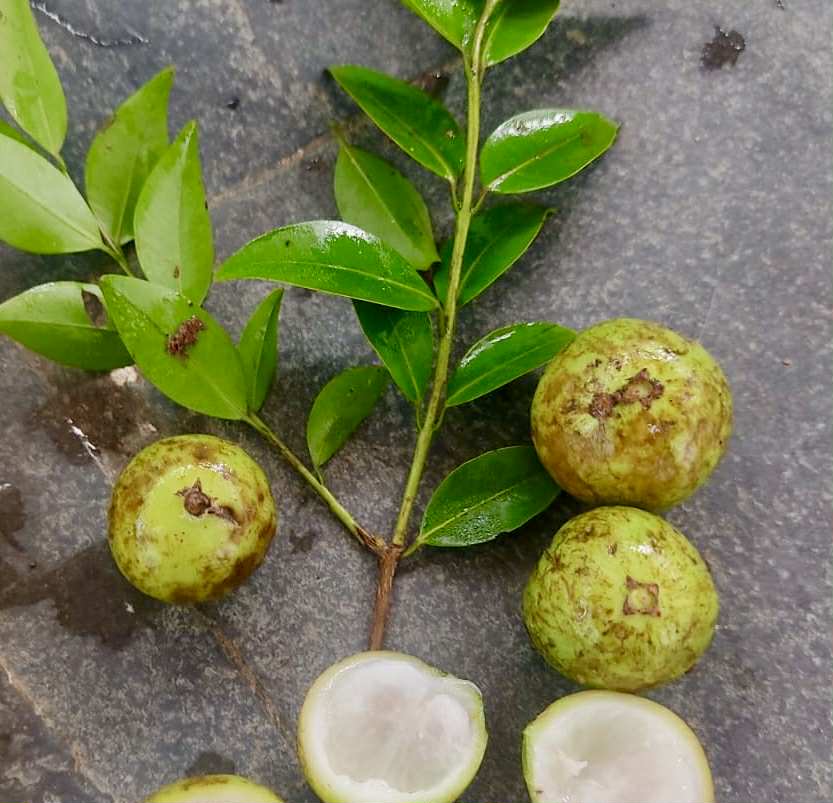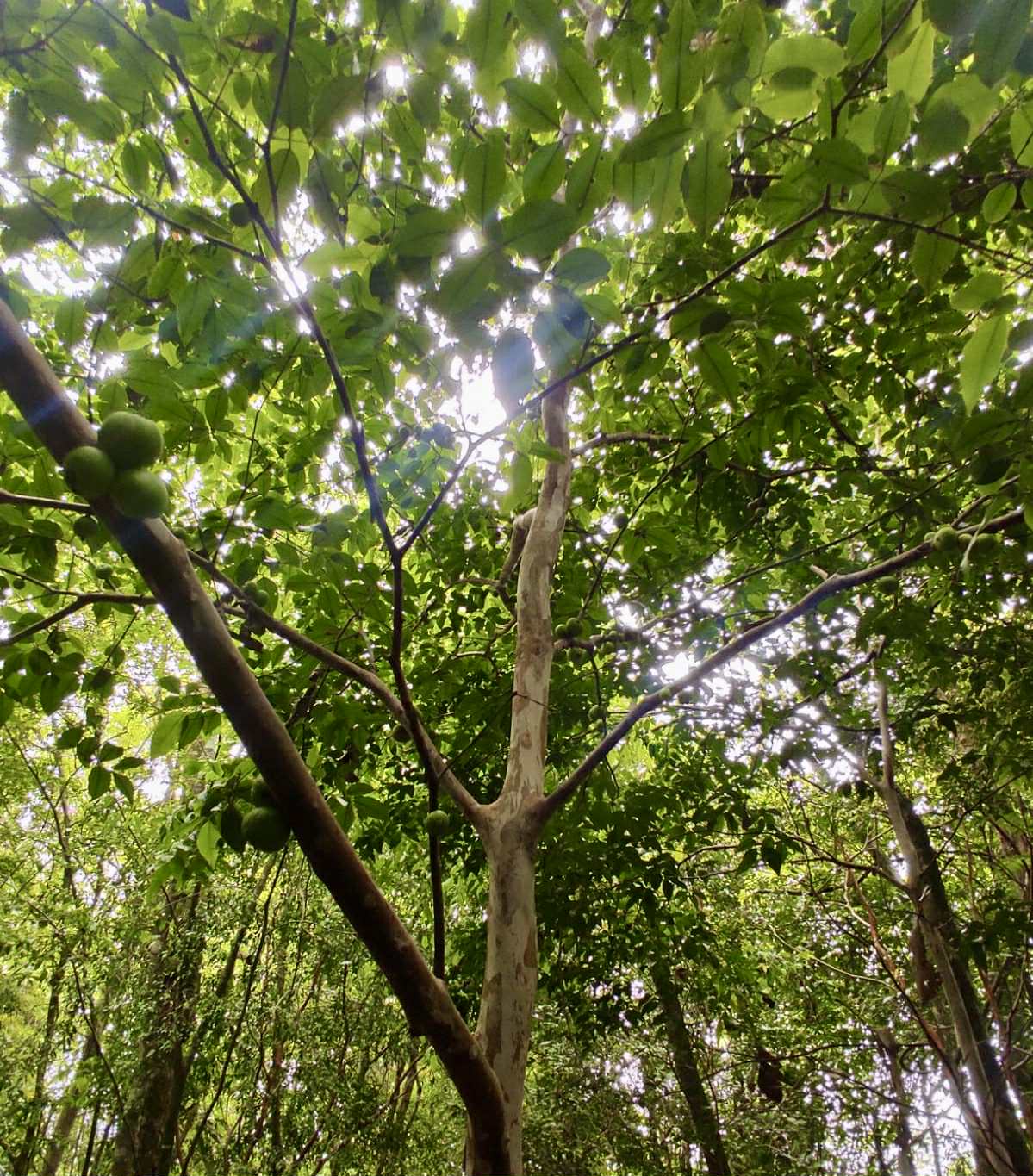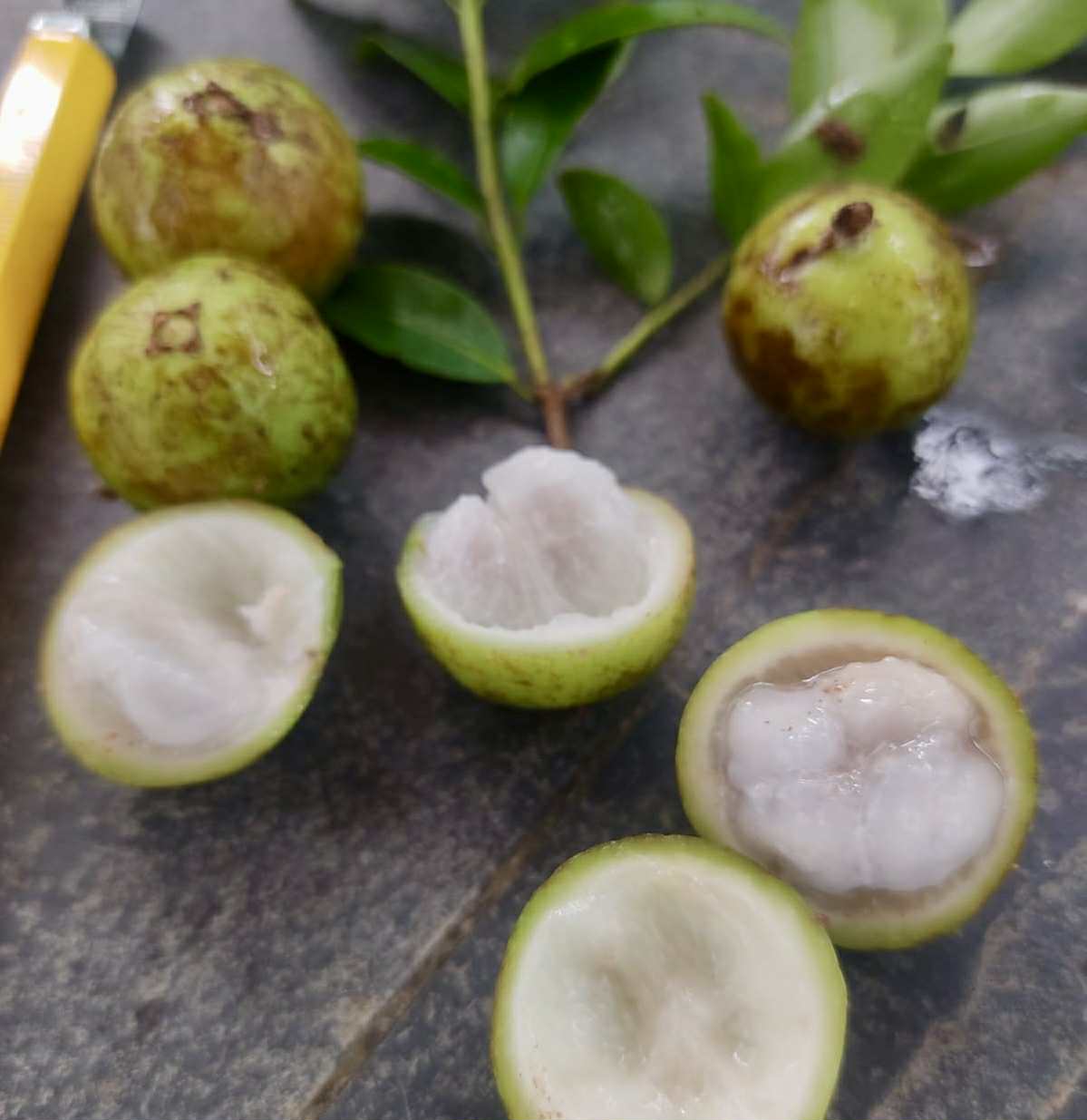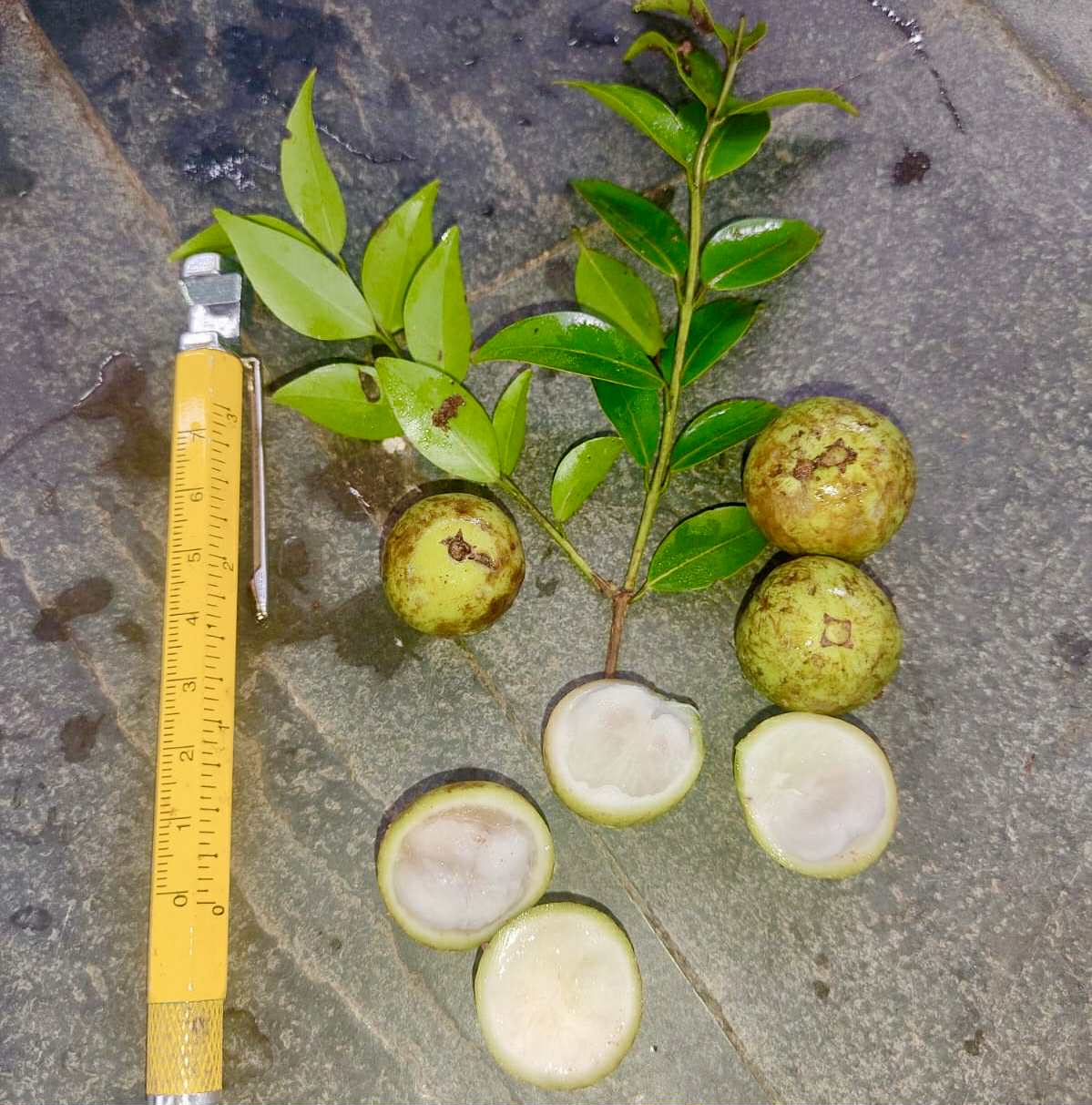Plinia sp. fruta verde - folha miúda - 1 fresh seed / 1 frischer Samen
Plinia sp. fruta verde - folha miúda
Family / Familie: Myrtaceae
origin from / Herkunft: Brasil / Brasilien
Climate / Klima: temperate to warm (10-30C / 50-86F) / gemäßigt bis warm (10-30C / 50-86F)
Use / Verwendung: edible fruits, juice, jam, ice cream, etc. / essbare Früchte, Säfte, Marmelade, Eis usw.
you buy / sie kaufen: 1 fresh seed / 1 frischer Samen
Delivery worldwide
Pre-order - delivery of these fresh seeds will be in the second week of December.
This discovery from the Mata Atlantica in Bahia is a small sensation for us.
You only notice this sensation upon closer inspection of the photos.
Many collectors are familiar with the black-fruited jaboticabas, and more experienced collectors also know the yellow- and red-fruited varieties, as well as the so-called "White Jaboticabas" (P. aureana), which, however, have a green skin.
All previously known "White Jaboticabas" have large, ribbed leaves. Approximately 3 to 4 times larger than normal Plinia cauliflora (Sabara) leaves.
And now look at the photos again!
Yes - that's right. This "White Jaboticaba" has small leaves - only slightly larger than those of a Jaboticaba Sabara.
Is this a completely new Plinia? Yes - and with a high degree of certainty.
But now to the tree and the taste.
The flesh is soft and very juicy. The flavor is delicious and reminiscent of a blend of Jaboticaba Sabara with a subtle hint of honey.
The tree is medium-sized and, like other Jaboticabas, thrives in containers.
The plant prefers a sunny to partially shaded location.
In the first year after planting, a partially shaded spot is ideal to protect the delicate, young leaves.
The soil should be slightly acidic and well-drained to prevent waterlogging.
The plant requires regular watering but does not tolerate soggy soil.
The root ball should be kept consistently moist.
As a subtropical plant, 'Plinia coronata' is not frost-hardy.
Ideally, it should be overwintered at a minimum temperature of 10°C (50°F).
Vorbestellung - die Lieferung dieser frischen Samen erfolgt in der zweiten Dezemberwoche.
Diese Entdeckung aus dem Mata Atlantica in Bahia ist für uns eine kleine Sensation.
Auf den Fotos erkennt man diese Sensation erst auf den zweiten Blick.
Viele Sammler kennen die schwarzfrüchtigen Jaboticabas und die erfahreneren Sammler kennen noch die gelb- und rotfruchtenden Arten sowie die sogenannten "Weißen Jaboticabas" (P. aureana), die jedoch eine grüne Schale haben.
Alle bisher bekannten "Weißen Jaboticabas" haben große, gerippte Blätter. Ungefähr 3 bis 4 mal größer als normale Plinia cauliflora (Sabara) Blätter.
Und jetzt schaut euch die Fotos noch einmal an!
Ja - richtig. Diese "Weiße Jaboticaba" hat kleine Blätter - nur etwas größer als die einer Jaboticaba Sabara.
Handelt es sich hier um eine völlig neue Plinia? Ja - und das mit großer Gewissheit.
Doch jetzt zu dem Baum und dem Geschmack.
Das Fruchtfleisch ist weich und sehr saftig. Der Geschmack ist sehr lecker und erinnert an eine Mischung aus Jaboticaba Sabara mit einer leichten Note von Honig.
Der Baum ist mittelgroß und lässt sich wie die anderen Jaboticabas auch gut im Kübel ziehen.
Die Pflanze bevorzugt einen sonnigen bis halbschattigen Standort.
Im ersten Jahr nach dem Einpflanzen ist ein halbschattiger Platz optimal, um die empfindlichen, jungen Blätter zu schützen.
Der Boden sollte leicht sauer sein und eine gute Drainage aufweisen, um Staunässe unbedingt zu vermeiden.
Die Pflanze benötigt regelmäßige Bewässerung, verträgt aber keine nassen Füße.
Der Wurzelballen sollte gleichmäßig feucht gehalten werden.
Als subtropische Pflanze ist die 'Plinia coronata' nicht winterhart.
Sie sollte idealerweise bei einer Mindesttemperatur von 10°C überwintert werden.







